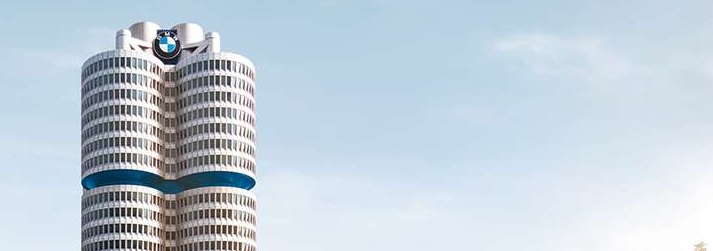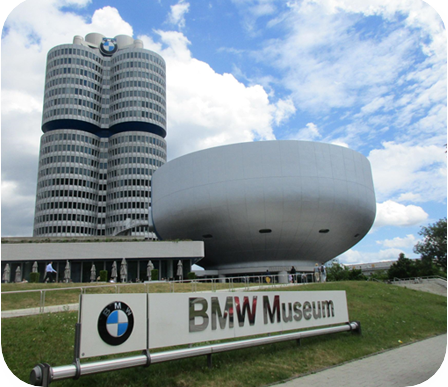
The BMW Museum brings to life over 100 years of automotive fascination, innovation, dynamism and the joy of driving. In this fascinating permanent exhibition, all questions about BMW, brand and product history will be answered and the arc from the beginnings to the present to the future will be stretched.
The new concept for the BMW Museum was developed out of the success and experience of the previous museum, whereby new emphasis was placed on stressing the importance of the BMW Museum as a brand museum.

Planning began in the spring of 2002, followed by radical redevelopment work in 2004, and culminating in the museum reopening in 2008. BMW commissioned the Stuttgart architects and exhibition designers Atelier Brückner and the Berlin-based ART+COM media designers with the work. The restoration of the building shell and other technical aspects were carried out by ASP Schweger Associates.
In view of the company’s importance as a global player and its extensive range of products, the new design provided for a considerable enlargement of the museum. First of all, the former museum bowl was connected with the near low-rise building to increase the exhibition space from an original 1,000 square metres to 5,000 square metres, meaning the new museum now boasts sufficient space for the presentation of about 120 exhibits.
The concept referred back to an idea dreamt up by architect Prof. Karl Schwanzer, the creator of the BMW Museum in 1973. He defined the inner structure of the round building as a continuation of the road in an enclosed space. In the adjacent low-rise building, the notion was further developed in a contemporary manner with a modern reinterpretation of his vision of a ‘road in an enclosed space as the principle of dynamic architecture’.
Analogous to the structure in the round building, where platforms were placed like squares along the road, the exhibition areas in the neighbouring low-rise building are organised along a ramp which forms the central visitors’ path. The bowl is reserved for temporary exhibitions, whereas the low-rise building provides space for an extensive theme park, for which its interior was gutted and completely restructured.
Seven exhibition houses have been built in the low-rise building. Each of the houses has been given an individual ‘identity’ developed on the basis of the museum’s themes. This individual appearance creates a context for the exhibits and provides a set of reference points along the route through the museum, measuring approximately 1,000 metres in length. The tour route has been designed with no crossroads and takes the visitor to all 25 exhibition areas.
The museum architecture, and exhibition and media design form an ideal setting to present a rich tapestry of themes in a very special way. The BMW Museum takes new approaches by integrating contemporary architecture with the historic buildings, in the same way that the brand is always setting new and innovative benchmarks for engineering and design.
During construction between 2004 and 2008, the museum bowl was restored to its original 1973 state. A central visitors’ ramp in the bowl connected a system of seemingly hovering platforms. The interpretation of the ramp as a road and the exhibition areas as squares became integrated into the neighbouring low-rise building as part of the new museum concept by the architects and exhibition designers at Atelier Brückner.
The exterior façade of this rectangular building was preserved as a ‘historical shell’, while the ceiling structures were removed and the interior was completely gutted. Contemporary architecture was integrated into the newly-created, larger space consisting of a surrounding ramp and seven individual exhibition areas. This glass-and-steel architecture strikes a deliberate contrast to the bowl.
To the outside world, it appears as a massive, self-contained concrete sculpture and its interior is dominated by the character of an open space, whereas the architecture of the low-rise building is more urban in nature.
source text: https://www.bmw-welt.com/en.html
source image: https://en.wikipedia.org/wiki/BMW_Museum
edited by Olivia